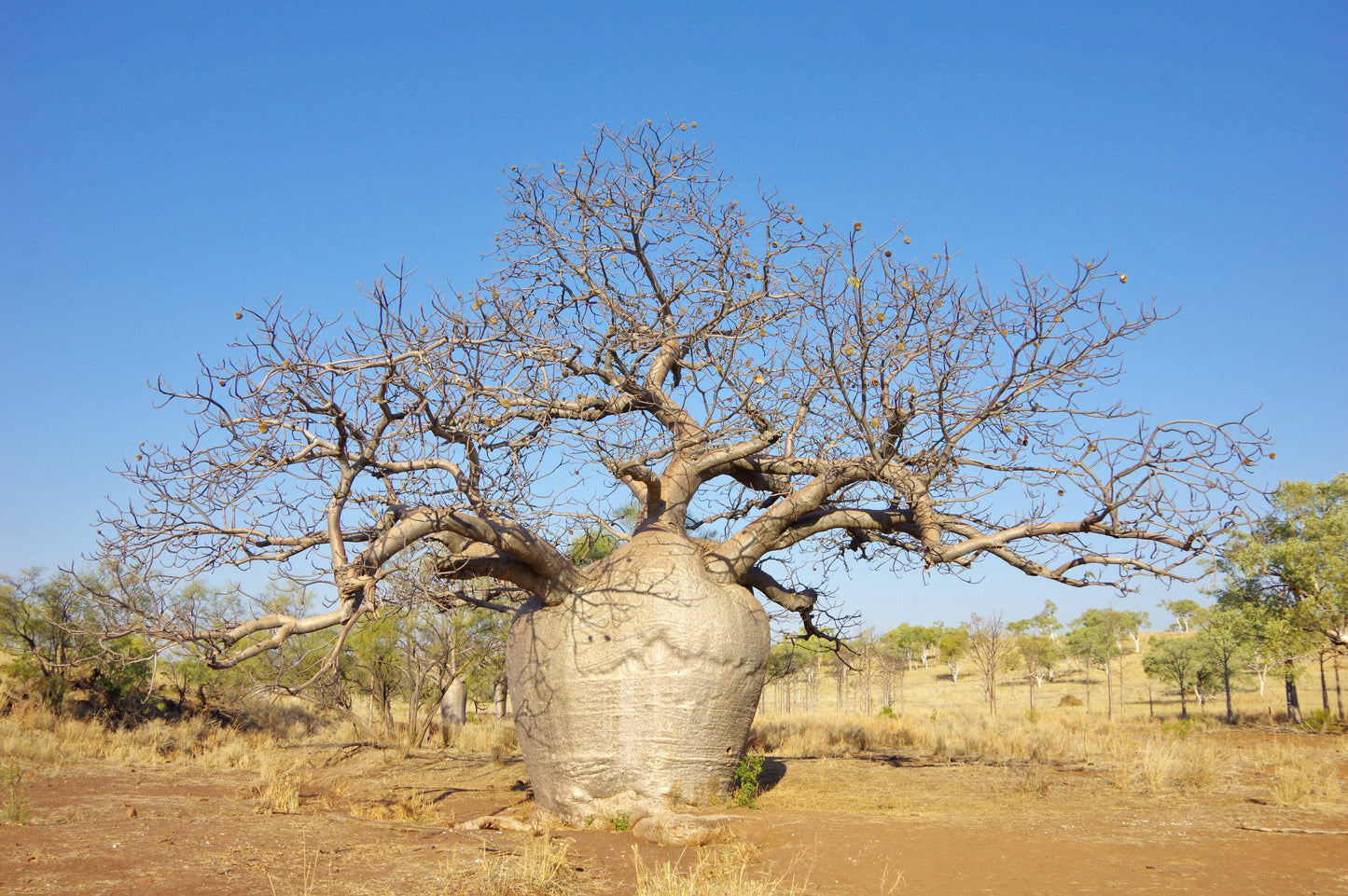Floridaseeds
Australian Baobab Adansonia greggii 5 Seeds
Australian Baobab Adansonia greggii 5 Seeds
Couldn't load pickup availability
The Australian Baobab is a deciduous tree that is native to western and northern Australia. It has a large, bottle or barrel-shaped trunk. Hardy in zones 10-12.
Growing Instructions for the Australian Baobab
The seeds have a hard seed coat that has to be treated, or scarified, in order for water to enter the seeds so that they can sprout. Scarify the large, roundish seeds and plant in warm, sandy soil. Scarify by rubbing on sandpaper in one spot until the seed coat is rubbed through and the white pericarp just shows. Incomplete scarification will yield no results–the seed coat must be pierced! 1. To scarify the seeds, nick or sand the seed coat with sandpaper. The seeds can be sanded with sandpaper, a nail file or an emery board. 2. Soak the seed in warm water for 24-48 hours. 3. The seeds like moist, well-drained soil. Use a sterile seed starter mix, if available. It prevents soil fungi from damaging the seeds and the seedlings. If not available, then make a mixture of half potting soil and half sand, perlite or vermiculite. Put the soil in a pot. Water the mixture so that it is moist but not wet. 4. Put the seeds on the soil. 5. Cover the seeds with a thin layer of soil. 6. Water the seeds. 7. Place the pots in an area with warm temperatures in full sun. 8. When the seedlings are a few inches tall, they can be transplanted.












